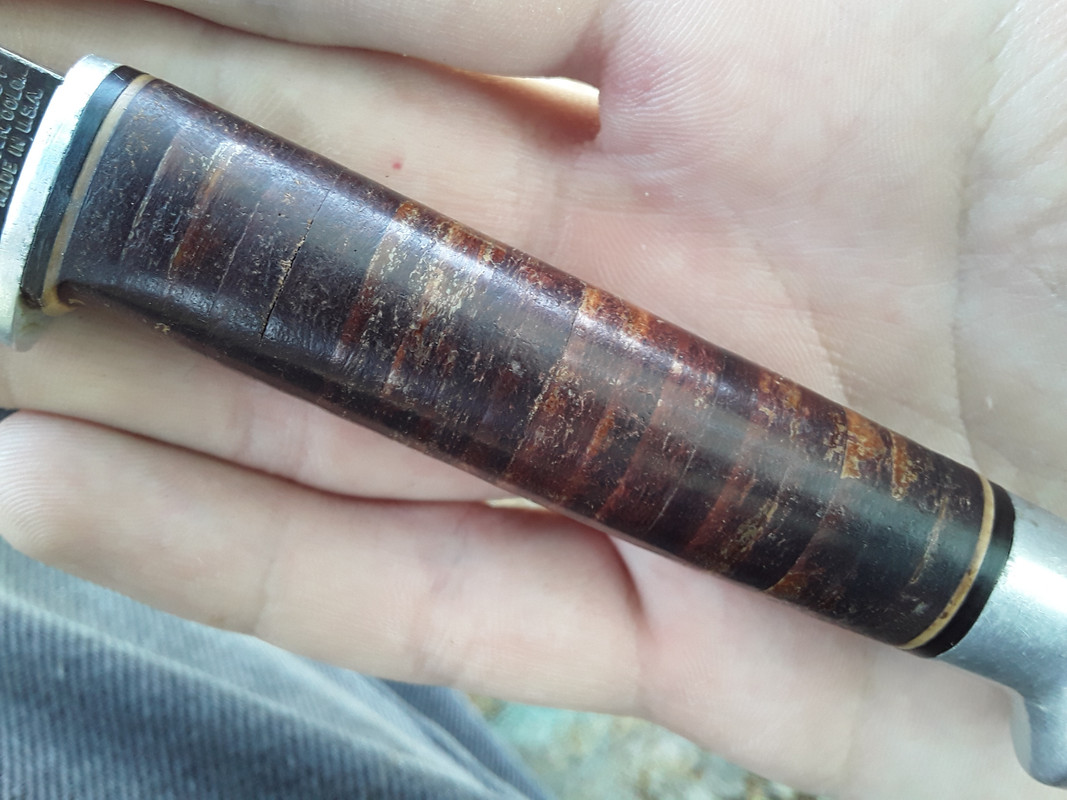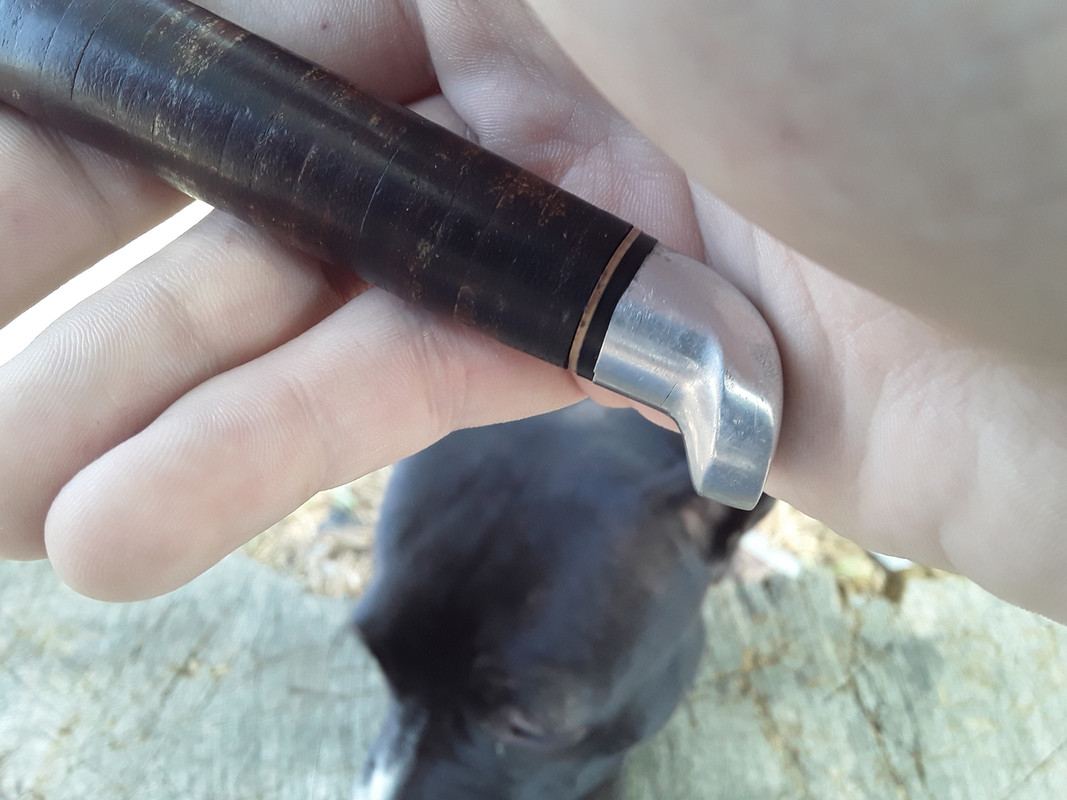I think careful ( using Fine sandpaper 400g ) on oxidized Leather spacers would work - it would not take much at all, and care to be taken not to reshape from the original.
So talking about Old Knives and bringing them back to life! Short periods of Mineral Oil soaking does not hurt Bone - I have read otherwise, but I have not experienced this - longer term- yes I could see why.
The older Knives just DO NOT LOOK GOOD shiny, Charlie said something one day that absolutely stuck with me, to this day I believe hugely in this - if you Shine a old Knife up- you take away all it's History - you rob the Knife of the Original finish that then slowly turned into its Life's Patina, not only does Patina protect Metals from rust but Patina is the Knife's Historic "Whole being".
So how do you get a seized rusty old knife going again?
Mineral oil, a container for the Knife to sit in- Plastic, The Knife doesn't need a Bath immersed, all it needs is placing the Knife into the container, then Mineral oil poured liberally into the liners - tip the Knife back and forward so it gets end to end.
Open the Blades back and forward quite a few times to work the oil in- and make sure you tip Knife so that the Oil that's in the Liners get right into the Joints. Plenty of Mineral oil on the Blades.
Leave the Knife in it's container in a drawer somewhere for a few days.
After a few days of Mineral Oil penetration:
This part will freak you out! but I have done this a Bunch and NEVER scratched the Blades - get an old fashioned Butter knife- obviously non serrated, The Butter knife should have a flat clean edge - use this on a 20 to 30 degree angle and basically scrape - work the Blades - you will see the Red Rust come off very quickly - be silly and concentrate on a small spot with obtrusive sanding techniques and expect to mark the Blade horribly, use common sense and good hard even strokes will work an old Rusty Blade like you wont believe- wont take much Elbow Grease either.
I have used Blunt Old Knife blades for this part of the Process as well with great effect.
You will see that the Rusty Knife's Blades will come up at least 50% to 60% better this method alone, other people say use a softer metal such as Copper - but as I said I have never had a problem with the above. Obviously Pits will still be there.
DO NOT USE sandpaper OR Steel Wool above the grade of 0000 grade, 0000 grade Steel Wool - with Mineral oil is THE WAY TO GO and will do the next and last stage and get the remainder off after the scraping process.
The good thing about 0000 Grade Steel Wool is that it will NOT shine up the metal, the Patina stays- but you work whatever residue of live Rust Spores away.
even the next step up 000 Steel Wool will Shine the Steel, dont settle for anything less than 0000 Grade.
After this is the simple Joint flushing method of Mineral Oil - working the Blades back and forward many, many times., Use Clean Mineral oil on to flush out and you will be surprised just how effective you can re-introduce the Walk and Talk back into your Gummed Up tight, tired Joints, it's extremely satisfying the get your Knife to have snap again.
You can use WD40 and work the Blades- and use Compressed Air to blow out the Gunk out of the Joints- this actually works in well with the above process.
There are many different ways, this way after trying so many different techniques is what I would always Highly recommend.







